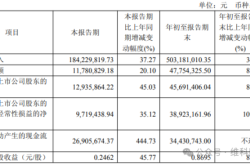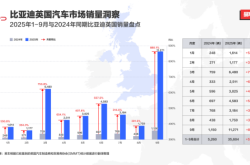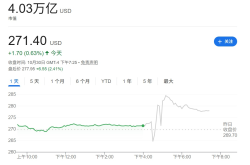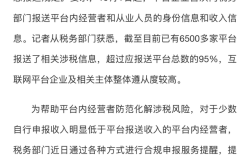In the Midst of E-commerce Turmoil, Who Is Truly Profiting?
![]() 10/31 2025
10/31 2025
![]() 475
475
The Advent of E-commerce Taxation
The annual Double 11 shopping frenzy is just on the horizon.
Major platforms are upping their subsidy game, live-streaming rooms are abuzz with activity, algorithms are delivering pinpoint targeting, and order fulfillment speeds are reaching new pinnacles, driving traffic to yet another peak.
Recently, an announcement regarding "e-commerce tax" cast a pall over the industry. On October 27th, the State Taxation Administration disclosed that over 6,500 internet platforms across the nation have completed their tax-related information reporting.
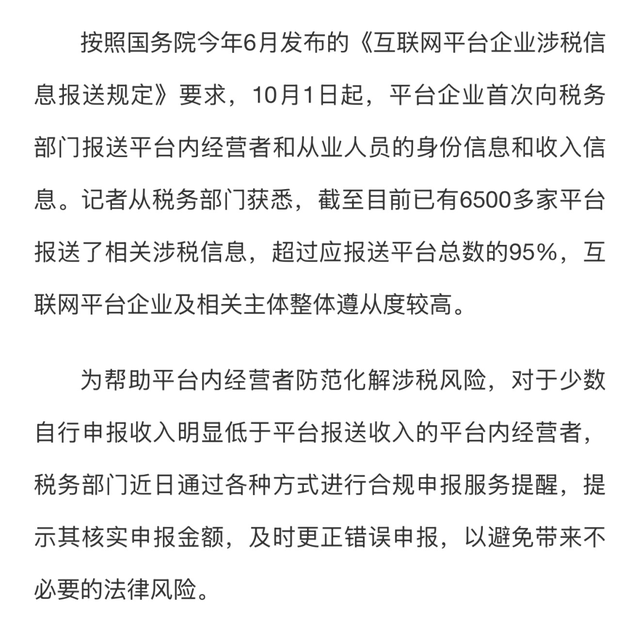
This marks the official entry of the platform economy into the "era of data transparency." Every transaction, profit share, and account is now meticulously recorded and visible to regulators.
With tighter regulations, razor-thin profits, and transparent accounts, tax compliance has become an inevitable hurdle for merchants. The e-commerce sector is now compelled to face a stark reality: "Who is genuinely making money?"
Over the past decade, Chinese e-commerce has experienced explosive growth, tolerating chaos and sacrificing profits for the sake of expansion. However, the platform economy is now being urged to "maintain genuine accounts."
The era of genuine accounting serves as the ultimate test of a platform's foundational strength.
E-commerce Restructures Its Foundation Amidst the Era of Genuine Accounts
The arrival of the "era of genuine accounts" signifies more than just adjustments for tax compliance in e-commerce; it heralds a fundamental restructuring.
After more than a decade of rapid traffic growth, platforms and merchants are transitioning from "sprinting" to "marathoning."
In the past, the e-commerce mantra was straightforward: whoever commanded traffic commanded business. Now, with a more robust regulatory framework and interconnected data chains, traffic advantages are ceding ground to operational efficiency and financial transparency.
Data from Tianyancha reveals that China is home to over 3.78 million e-commerce-related enterprises, with 69% of them registered with capital below 2 million yuan. This underscores that beneath the thriving e-commerce ecosystem lies a vast array of "low-margin, high-volume" and "small and scattered" players.
In recent years, e-commerce platforms have achieved remarkable growth through subsidies, traffic-driven blockbusters, and major shopping seasons. However, the growth landscape is now undergoing structural shifts, with social commerce, live-streaming sales, and instant retail emerging as new battlegrounds.
According to the "2025 E-commerce Industry Development Observation Report," national online retail sales witnessed a 6.4% year-on-year increase in the first three quarters of this year, while the cost index for e-commerce services surged by nearly 12%.
In the live-streaming e-commerce sector, the rise in host commissions, return rates, and logistics costs has driven profit margins for many mid-tier brands down to single digits.
Every additional link in the process—be it product selection, live-streaming, ordering, fulfillment, or after-sales—can introduce new processes, coordination efforts, and audits. These hidden costs, once obscured by traffic growth, are now coming to the fore in the transparent platform economy.
Meanwhile, platform incentive policies are quietly tightening their grip.
Alibaba has slashed commission rebates for certain categories; Pinduoduo has shifted some of the "Billion Subsidy" costs from the platform to merchants; and Douyin E-commerce has significantly tightened rebates for influencer sales.
For the first time, e-commerce businesses are being compelled to compete on "genuine profits." The implementation of "e-commerce taxes" has brought this competition into the open.
Many merchants previously optimized their reported profits through multi-account operations, false invoices, and private account transactions. Now, these gray areas are gradually being penetrated by systematic oversight.
Tax information, transaction records, commission structures, and profit-sharing data are all entering a verifiable and traceable closed loop.
A representative from a multi-brand operation team in East China shared with us:
"In the past, everyone competed on algorithm prowess. Now, it's about who has cleaner accounts, faster financials, and steadier compliance."
His team began adjusting its model in August this year, reducing low-margin SKUs, increasing direct supply chain procurement, and introducing an AI financial system for intelligent verification of distribution commissions, invoice collection, and inventory settlement.
The result was an 8% increase in profit margins and a 20% reduction in human and financial costs.
The core of e-commerce competition is shifting from a "traffic logic" to an "operational logic."
JD Group mentioned in its latest earnings report that it will fully implement a "dual-drive strategy of low-price tactics and supply chain efficiency" in 2025. Pinduoduo's Temu business emphasizes optimizing global fulfillment costs through AI, with a core goal of maintaining healthy gross margins. Alibaba, on the other hand, has proposed a "healthy growth" strategy, emphasizing profit quality and merchant sustainability.
In essence, platforms are starting to "do the math."
They are not calculating inflated GMV figures but real numbers on cash flow, fulfillment costs, return rates, and after-tax profits.
The ability to calculate genuine accounts is becoming e-commerce's new "moat."
Against a backdrop of dwindling traffic dividends, stricter regulations, and intense competition, only enterprises that can comprehend "genuine accounts" will witness true profits. Only platforms that can accurately calculate "genuine accounts" will achieve genuine growth.
The Emergence of Systemic Fatigue in E-commerce: Busier but Less Profitable
The e-commerce industry is undergoing a quiet yet structural backlash. On the surface, it's bustling with activity—full shelves and frequent live-streaming—but profit margins are thinning. The busier the operation, the more loss-incurring; the more intense the competition, the more fatigued the players.
In the past, e-commerce platforms derived their growth momentum from the multiplier effect of traffic. Doubling the traffic could triple the GMV.
However, this model is losing its efficacy as user bases reach saturation.
According to QuestMobile data, as of September 2025, China's mobile internet user base grew by only 1.8%, while the average daily usage time declined for the first time.
In other words, traffic has peaked. Acquiring new traffic is becoming increasingly expensive, and retaining existing users is more challenging.
To sustain growth, platforms are compelled to intensify their marketing, subsidies, and content investments.
This results in a simultaneous increase in traffic and a decline in the ROI per unit of traffic. More investment leads to thinner profits.
"E-commerce is no longer starved for users but for profits," summarized an Alibaba e-commerce executive.
If the period from 2018 to 2022 was the golden age of algorithm-driven e-commerce efficiency, then post-2023, algorithms are beginning to backfire on the platforms themselves.
Recommendation algorithms are slicing attention spans thinner and making them more expensive. The more precise the user targeting, the higher the acquisition cost; the smarter the advertising, the faster the budget depletion.
According to iiMedia Consulting data, the average marketing cost for brands on Douyin, Kuaishou, and Taobao Live increased by 28% year-on-year in 2025, while the average conversion rate improved by only 5%.
In essence, the "intelligence" of algorithms is devouring profits.
On the surface, platforms appear to be more intelligently allocating traffic, but they are actually trapped in an "algorithm competition" cycle. Each platform burns money to boost short-term ROI, collectively driving up the industry's overall cost curve.
This has led platforms into a phase of "optimization anxiety," as algorithms no longer create incremental efficiency but merely compete for existing attention.
Decades of high growth have cultivated massive organizational systems: operations, live-streaming, advertising, customer service, compliance, and risk control. Each department has its reasons to be "busy," yet true cost reduction remains elusive.
During the traffic boom, these structures could be concealed by growth. However, as traffic slows, the massive organization becomes a burden.
Alibaba's sales and marketing expenses accounted for approximately 14.5% of its revenue in FY2025 but surged to around 21.5% in the June 2025 quarter, a five-year high. Pinduoduo's sales and marketing expenses reached approximately RMB 33.4 billion in Q1 2025, a 43% year-on-year increase.
"The busier, the more loss-incurring" reflects the collective anxiety of e-commerce platforms as they enter maturity. Over the past decade, e-commerce has overly relied on external variables such as traffic, algorithms, and subsidies while neglecting systemic efficiency, organizational structure, and financial transparency.
As the platform economy enters the "era of genuine accounts," only by restructuring operational systems, returning traffic to user value, subsidies to supply efficiency, and growth to profits can e-commerce overcome its fatigue.
The Next Battle in E-commerce: Efficiency and Trust
As "genuine accounts" become the new norm, the e-commerce industry will shift from traffic-driven to profit-driven growth, from advertising races to efficiency competitions, and from scale pursuit to trust rebuilding.
In this phase, "calculating accurately," "being visible," and "moving swiftly" have become the three core competencies for e-commerce platforms and merchants.
In the past, financial systems were the "back-end" of e-commerce; now, they serve as the "middle-office" for decision-making.
Tianyancha data shows that in the first half of 2025, the number of newly registered financial and compliance SaaS services increased by nearly 40% year-on-year, with about 60% of clients coming from the e-commerce and new consumption sectors.
More platforms are using AI to redefine "accounting" methods. From order recognition and profit-sharing breakdowns to automatic invoice collection, AI financials make every transaction traceable, verifiable, and auditable.
This not only reduces risks but also allows enterprises to see, for the first time, which links are profitable and which are leaking money.
The CFO of a Hangzhou-based beauty brand stated that after implementing an intelligent expense control system earlier this year, invoice matching alone reduced labor costs by 70%. Supply chain payment terms shortened, and cash flow turnover improved by nearly 15%.
"We used to think cost reduction meant layoffs; now we realize it means calculating accurate accounts."
In the absence of traffic dividends and subsidy space, supply chain speed determines profit thickness.
JD, Pinduoduo, and Douyin are all strengthening their digital supply chain systems, using algorithms to drive inventory forecasting, logistics scheduling, and intelligent fulfillment.
JD mentioned in its earnings report that its intelligent warehousing system now covers 90% of core warehouses nationwide, with warehousing and distribution efficiency improving by 22% year-on-year. Pinduoduo's Temu has shortened cross-border fulfillment times to an average of 7.3 days in North America through AI-predicted logistics fluctuations.

E-commerce competition has shifted from "who can sell" to "who can deliver more efficiently." As traffic stabilizes, taxes become transparent, and compliance tightens, every acceleration in the supply chain reshapes profits.
Meanwhile, the "era of genuine accounts" has made trust a scarce resource. On one hand, regulatory penetration means "fake sales" and "brush trading" are no longer sustainable. On the other hand, consumer trust thresholds for platforms and brands are rising. They no longer solely focus on the lowest price but prioritize "authenticity" and "sustainability."
According to the "iResearch E-commerce User Insight Report," "trust" has surpassed "price discounts" as the top factor influencing repeat purchases in 2025.
This means that whoever can establish new trust relationships in the transparent era will gain new growth opportunities.
Platforms like Douyin, Taobao, and Xiaohongshu are quietly adjusting their recommendation logic from "stimulating consumption" to "accompanying consumption," and from traffic competition to content trust.
The long-term value of brands is now returning to product quality, service experience, and financial stability.
The "era of genuine accounts" does not signify the end of e-commerce's golden age but rather a rewriting of the rules.
Past growth relied on traffic accumulation; current growth depends on systemic efficiency.
Past competition relied on price wars; current competition hinges on efficiency recovery.
The second half of e-commerce does not belong to the biggest spenders but to the most accurate calculators.
While the first golden decade of e-commerce relied on traffic, the next decade will hinge on accurate accounting.

